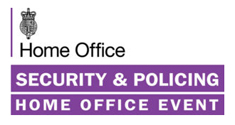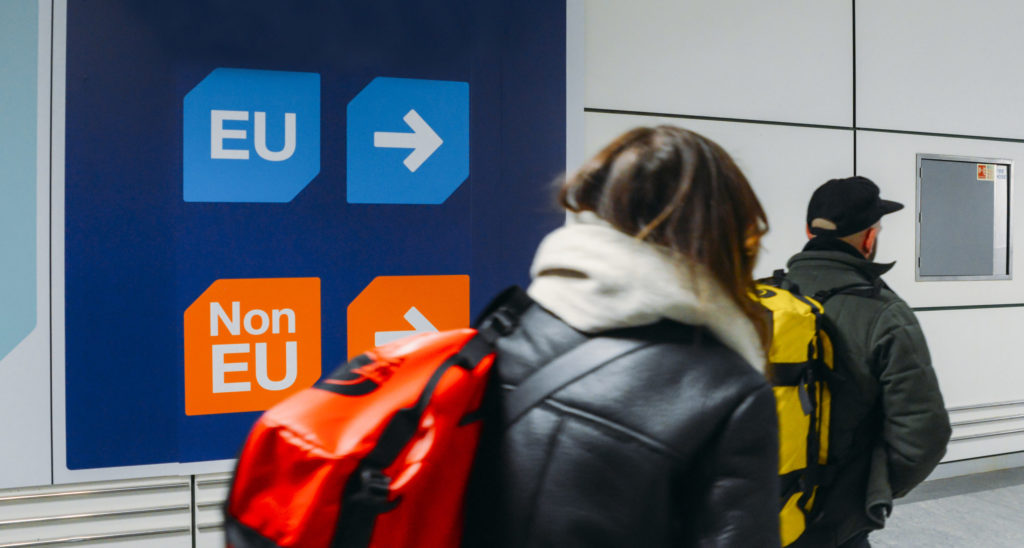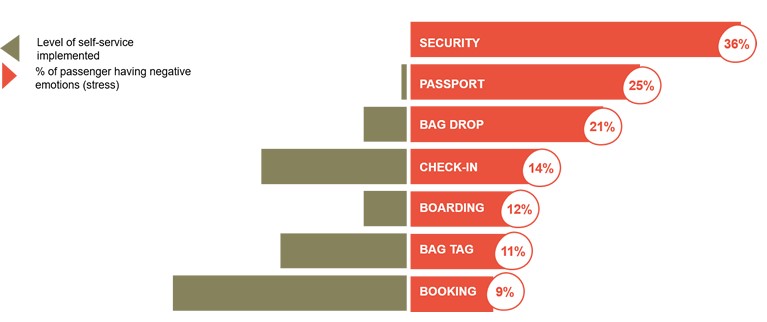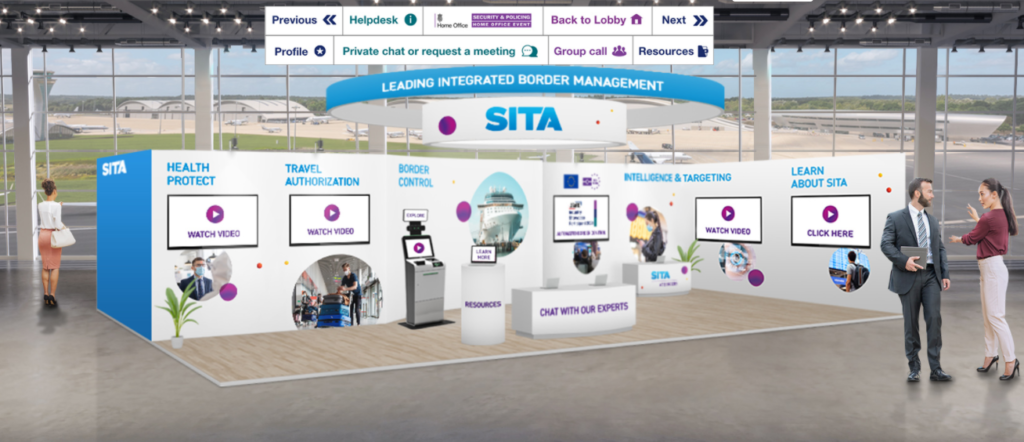Provided by S&P2021 Exhibitors: SITA
Written by Peter Sutcliffe Strategy and Portfolio Director, SITA AT BORDERS
The introduction of the new European Union Schengen Zone border controls planned for 2022 presents operational challenges for EU member states to achieve smooth and effective border processes. SITA has been a proponent for the technological transformation of passenger journeys for more than 70 years. As the technology provider for the air transport and borders industries, SITA deployed the first common-use infrastructure at airports, the first airline e-commerce booking engine, and the first electronic travel authorization (ETA) system for border management.
Our ability to understand the evolving needs of travelers and their interaction with both travel providers and governments has been critical to shaping solutions in these domains. This empathy with travelers is acutely demonstrated by SITA’s success in the widespread use and adoption of self-service solutions – covering self-bag drop, check-in, and immigration use cases. With over 5,500 kiosks deployed, we have the right breadth and depth of knowledge to optimize solutions so that they are accessible to the widest possible cohort of travelers.
Leveraging the benefits of automated border control (ABC) kiosks is a particular topic of interest for members of the Schengen Area. The implementation of the European EES is designed to strengthen the common border, prevent irregular migration, and help protect the security of European citizens. This new regulation will also require Member States to capture biometric and biographic data for non-EU citizens, so-called third-country nationals (TCNs). The deployment of self-service ABC kiosks presents an opportunity to border agencies to improve border operations while complying with this data capture requirement.
Immigration clearance is the touchpoint where travelers report the lowest levels of satisfaction.[1] Despite the mandatory requirement to capture additional data at this stage, SITA technology can help ease the process and in turn improve passenger satisfaction. Only one in four travelers are willing to tolerate a wait of over 10 minutes at immigration – and only 2% would countenance more than 20 minutes.[2] While immigration control has the second-lowest level of self-service, it has the second-highest level of reported stress among travelers.
Many travelers report greater satisfaction when using these self-service touchpoints to clear immigration. The liberation of border guards to focus on travelers requiring greater scrutiny enables these highly trained officers to make the best use of their time and skills. However, some key design criteria must be considered to maximize the ease of use for travelers.
SITA’s ABC kiosks are easily integrated with existing Entry Exit systems, e-Gates, and pre-enrolment mobile apps. They provide a platform to add components to create a biometrically-enabled and high throughput immigration process. The kiosks are also designed with accessibility at the forefront – including compliance with regulations covering the use of equipment by people with disabilities. The use of graphics and signal lights to prompt passport placement and biometric data capture also enhances the user experience. But the equipment itself is only part of broader efforts to maximize ease of use. SITA has worked extensively with infrastructure operators to ensure that traveler education does not start at the self-service device – but is part of a journey that begins with video instructions during travel, signage in the arrivals area, and the deployment of trained personnel to provide support to travelers.
Through surveys and feedback from customers and industry bodies like IATA and ACI, we have adapted and refined our SITA ABC Kiosks and processes. SITA has performed studies with the United States Customs and Border Protection and for the Mexican National Institute of Migration. These studies optimized passenger throughput, passport processing times, staffing levels, and the border crossing layout. Below are some examples of how we have adapted the SITA ABC Kiosks to ensure optimal deployment:
- Ease of use for the passenger: simplifying screens, questions, processing family groups, multi-language support, and implementing “attention getters” such as lights on peripheral devices as the passenger goes through the process.
- Signage and queue management: our design research identified communication as one of the key steps in obtaining efficient kiosk usage and throughput. Many can find this technology new and their experience can vary between different borders. Therefore, clear communication is critical, from signage to digital information displays, employing clear graphics and minimal text to avoid confusion for non-native speakers.
- Kiosk placement and forecast demand: analyzing the passenger profile to ensure good passenger flow.
As a trusted partner to governments for over 20 years, SITA’s understanding of border control operations is brought to bear on both product and solution offerings, ensuring that customers benefit from SITA’s extensive experience in this domain and unique position as an expert solutions provider to governments and the aviation industry alike.
Find out more by visiting the SITA stand at Security & Policing 2021 and see SITA’s latest innovations in the JSaRC Industry Showcase feature at the event. Alternatively visit www.sita.aero
[1] IATA GAPS 2019
[2] Ibid.
The views expressed in this editorial are not necessarily shared by, nor should be taken as the views of HMG, ADS and DODS (the event organisers). Any views expressed are those of the individual exhibitor contributors. No responsibility or liability is accepted by HMG, the organisers, for any loss occasioned to any person, legal or physical, acting or refraining from action as a result of any statement, fact, figure, expression of opinion or belief contained in the editorial features. The publication does not in any way imply endorsement by HMG or the event organisers of the products or services referred to therein.



